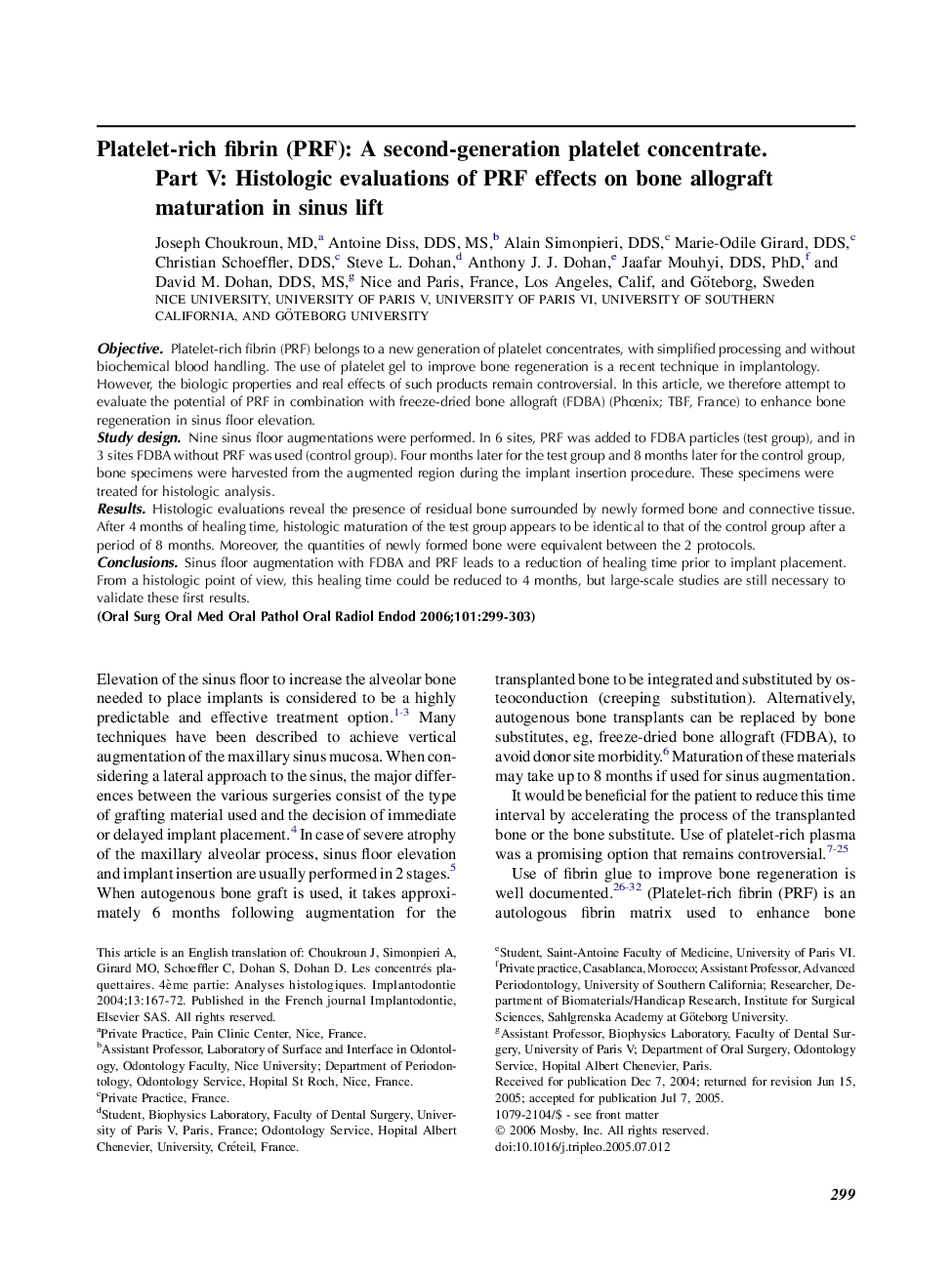| Article ID | Journal | Published Year | Pages | File Type |
|---|---|---|---|---|
| 3170116 | Oral Surgery, Oral Medicine, Oral Pathology, Oral Radiology, and Endodontology | 2006 | 5 Pages |
ObjectivePlatelet-rich fibrin (PRF) belongs to a new generation of platelet concentrates, with simplified processing and without biochemical blood handling. The use of platelet gel to improve bone regeneration is a recent technique in implantology. However, the biologic properties and real effects of such products remain controversial. In this article, we therefore attempt to evaluate the potential of PRF in combination with freeze-dried bone allograft (FDBA) (Phœnix; TBF, France) to enhance bone regeneration in sinus floor elevation.Study designNine sinus floor augmentations were performed. In 6 sites, PRF was added to FDBA particles (test group), and in 3 sites FDBA without PRF was used (control group). Four months later for the test group and 8 months later for the control group, bone specimens were harvested from the augmented region during the implant insertion procedure. These specimens were treated for histologic analysis.ResultsHistologic evaluations reveal the presence of residual bone surrounded by newly formed bone and connective tissue. After 4 months of healing time, histologic maturation of the test group appears to be identical to that of the control group after a period of 8 months. Moreover, the quantities of newly formed bone were equivalent between the 2 protocols.ConclusionsSinus floor augmentation with FDBA and PRF leads to a reduction of healing time prior to implant placement. From a histologic point of view, this healing time could be reduced to 4 months, but large-scale studies are still necessary to validate these first results.
